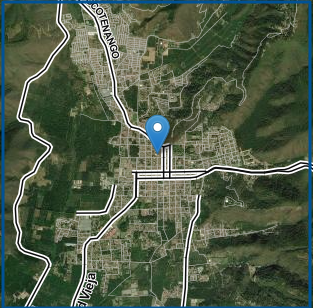Introduction to the flavor of Guatemala Antigua coffee beans at auction on July 27 at Starbucks
Guatemala, real Central American coffee beans. Beans grown in Guatemala tend to have rich flavors of chocolate, cocoa and toffee, especially Strictly Hard Bean raw coffee grown in the Atitlan and Antigua coffee-growing areas of the central highlands of the country, showing these qualities and floral acidity, which is usually smoky or chocolate-floral.

July 27th COE of Guatemala starts bidding
Students who are interested can log on to the official website to see the raw bean information.
The growing areas or regions of Guatemala include the Flajanes Plateau, Antigua, the Vevetnango Highlands, the Tropical Rain Forest Copan, Mount San Marcos, the New Orient and Attland.
Among them, coffee beans from Antigua were selected by Starbucks. Starbucks chose Antigua, Guatemala's Antigua region, like Burgundy and champagne in France. These agricultural areas are famous for their enthusiasm and rich traditions, and their greatest feature is the highest quality drinks. This fertile region of southern Guatemala lies between three volcanoes. Altitude and clay create perfect conditions for coffee growers and enthusiasts.
The coffee beans produced under this condition are mixed with smoky aromas, supplemented by micro-cocoa tones and perfectly highlighted by a hint of acidity.

Guatemala Antigua Coffee is a strict hard bean coffee grown between 4600 and 5600 feet above sea level, with temperatures ranging from 66 to 71 degrees Fahrenheit (19 to 22 degrees Celsius). Rainfall in the area is usually between 800mm and 1200 mm per year, with humidity relatively constant at about 65 per cent. Therefore, the area can easily create a fresh environment for the cultivation of coffee beans. The region's large and lush tropical rain forest provides vital humidity to nearby plantations, adding to the distinction of this coffee.
Different dry and rainy seasons provide a consistent climate, resulting in uniform maturation of coffee plants, and the harvest of raw coffee usually occurs from January to mid-March.
Important Notice :
前街咖啡 FrontStreet Coffee has moved to new addredd:
FrontStreet Coffee Address: 315,Donghua East Road,GuangZhou
Tel:020 38364473
- Prev

Nigerian Coffee: the fight against Instant Coffee Culture the benefits of accelerated Coffee production Competition in West Africa
Nigerian Coffee: fighting against instant coffee culture today let's learn about Nigerian coffee. In general, unlike other African countries such as Kenya, Nigeria is not crazy about coffee. For many people, tea and cocoa are the hot drinks of choice, so much so that by 2023, 40% of all non-alcoholic beverages spending in Nigeria is expected to be spent.
- Next

Why has coffee automation become so common? The influence of artificial Intelligence on Coffee automatic setting
How does automation shape the coffee industry? The third wave of coffee culture has become synonymous with coffee-making techniques such as self-baking and other phrases are often used to promote coffee itself and coffee drinks. As a result, some people may think that the increase in automation in the coffee industry is inconsistent with the art of making coffee, whether in production, processing, roasting or brewing. For many enterprises, automation
Related
- Detailed explanation of Jadeite planting Land in Panamanian Jadeite Manor introduction to the grading system of Jadeite competitive bidding, Red bid, Green bid and Rose Summer
- Story of Coffee planting in Brenka region of Costa Rica Stonehenge Manor anaerobic heavy honey treatment of flavor mouth
- What's on the barrel of Blue Mountain Coffee beans?
- Can American coffee also pull flowers? How to use hot American style to pull out a good-looking pattern?
- Can you make a cold extract with coffee beans? What is the right proportion for cold-extracted coffee formula?
- Indonesian PWN Gold Mandrine Coffee Origin Features Flavor How to Chong? Mandolin coffee is American.
- A brief introduction to the flavor characteristics of Brazilian yellow bourbon coffee beans
- What is the effect of different water quality on the flavor of cold-extracted coffee? What kind of water is best for brewing coffee?
- Why do you think of Rose Summer whenever you mention Panamanian coffee?
- Introduction to the characteristics of authentic blue mountain coffee bean producing areas? What is the CIB Coffee Authority in Jamaica?

